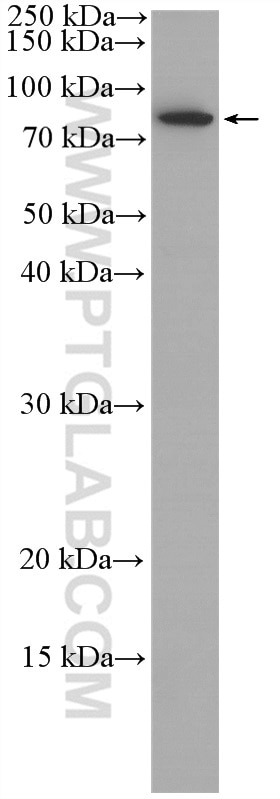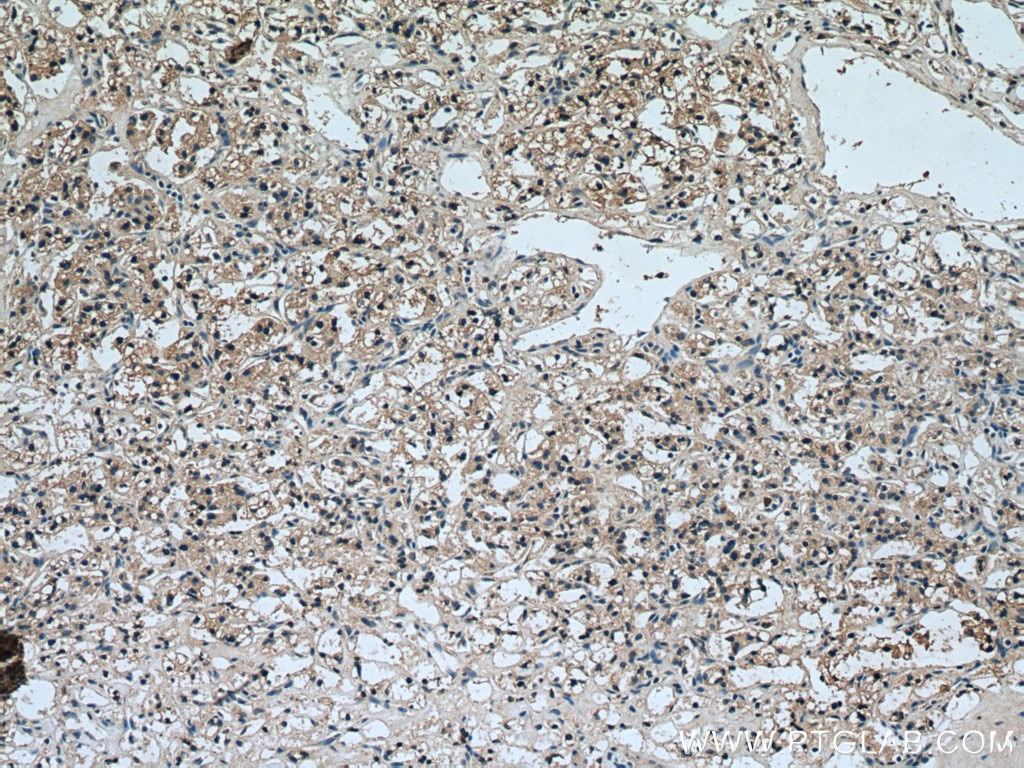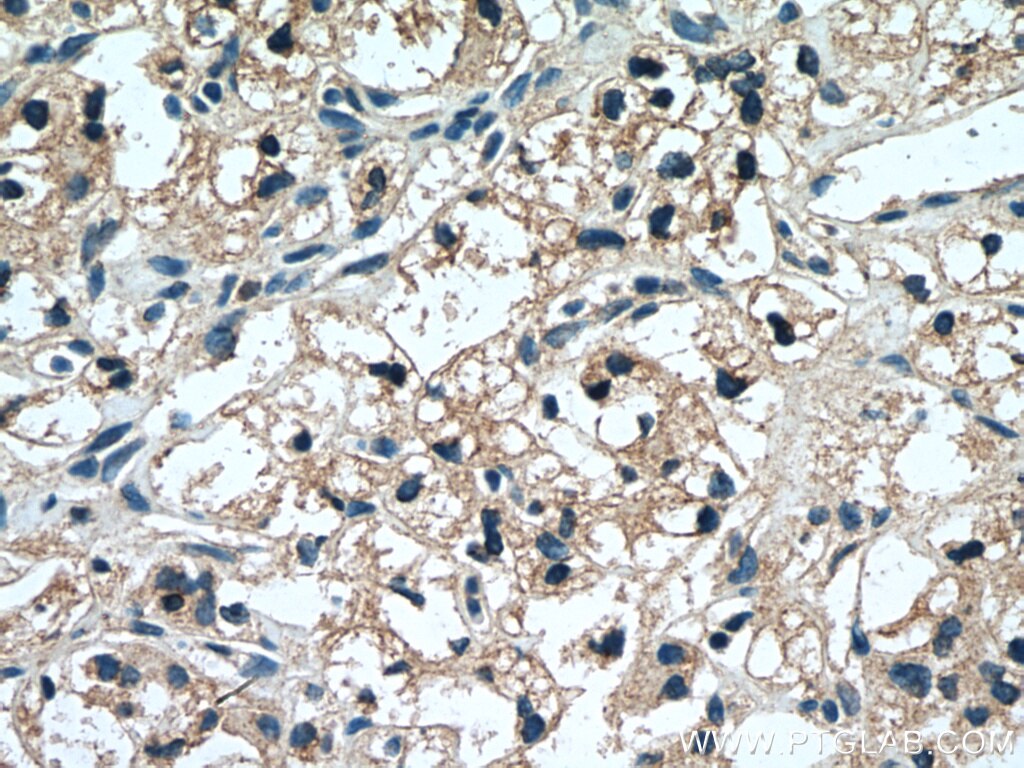Published Applications
| IHC | See 2 publications below |
| IF | See 1 publications below |
Product Information
26420-1-AP targets HAVCR1 in IHC, ELISA applications and shows reactivity with human samples.
| Tested Reactivity | human |
| Cited Reactivity | mouse |
| Host / Isotype | Rabbit / IgG |
| Class | Polyclonal |
| Type | Antibody |
| Immunogen | HAVCR1 fusion protein Ag23888 Predict reactive species |
| Full Name | hepatitis A virus cellular receptor 1 |
| Calculated Molecular Weight | 359 aa, 39 kDa |
| GenBank Accession Number | BC013325 |
| Gene Symbol | HAVCR1 |
| Gene ID (NCBI) | 26762 |
| Conjugate | Unconjugated |
| Form | Liquid |
| Purification Method | Antigen affinity purification |
| UNIPROT ID | Q96D42 |
| Storage Buffer | PBS with 0.02% sodium azide and 50% glycerol pH 7.3. |
| Storage Conditions | Store at -20°C. Stable for one year after shipment. Aliquoting is unnecessary for -20oC storage. 20ul sizes contain 0.1% BSA. |
Background Information
Hepatitis A virus cellular receptor 1 (HAVCR1, also known as TIM-1, KIM-1 or CD365) is a class I integral membrane glycoprotein, with an ectodomain containing Ig-like domain and a mucin domain. HAVCR1 acts as a membrane receptor for hepatitis A virus (HHAV) (PMID: 9658108; 8861957). HAVCR1 provides a costimulatory signal for T cell activation and inhibits the development of peripheral tolerance (PMID: 16284246; 15793575). HAVCR1 may be involved in the regulation of asthma and allergic diseases (PMID: 14534576). It has been reported that HAVCR1 is shed into urine after acute kidney damage and is a marker of renal tubular injury (PMID: 14600030).
Publications
| Species | Application | Title |
|---|---|---|
Drug Deliv Sialic acid-modified solid lipid nanoparticles as vascular endothelium-targeting carriers for ischemia-reperfusion-induced acute renal injury. | ||







